Concerns with Denver's Use of the Goosinator
Wild Bird has multiple concerns regarding the proposed use of the "goosinator" in Denver city parks. Concerned individuals and citizens may choose to use any or all of the concerns outlined below when contacting government officials while also adding their own concerns and perspective.
Denver and the Front Range is on the migratory path of federally protected Canada geese. Without exception, every single winter there will always be large populations of geese moving through the area, and taking advantage of large open spaces, planted with one of their favorite foods (Kentucky Blue Grass kept cut short to increase their line of sight), and with open access to water for protection. During mild winters, like this one, the situation will led to increased numbers spending more time in Denver parks due to lack of snow cover and warm enough temperatures for them to stay comfortably. So what we are seeing is completely natural with the habitat humans created. Additionally, the birds migrating through city parks fly at night, and rest and graze during the day to fuel themselves for continued movement south. If the daytime activity is continually and aggressively disrupted they may physically be unable to continue to migrate. Birds disturbed during the day will not fly long distances, but will instead be pushed into neighboring yards and other open grassy areas nearby (from park to park). Large parks such as City Park or Washington Park would probably see movement from one end to the other.
From a human safety perspective, birds panicked from being approached by the "25 mph" goosinator are also much more likely to fly into people, bikes, and into roadways surrounding the parks. Geese can be quite large and can cause a lot of damage if they impact a person or vehicle. And injuring the geese themselves by hazing or harassing them is illegal (see the federal Migratory Bird Treaty Act). If a goose is hazed into a vehicle then the hazer would be liable.
We also question the use of "unpaid interns". These interns are going to be approached by people in the parks, both for and against the use of these machines. Are they going to be trained to discuss what is being done? Is the city going to be responsible for putting them in the position of interacting with potentially hostile public? How are they going to be trained to make sure both the geese and the public are not harmed?
Goose poop, while a nuisance, is not a particular health hazard. Is this kind of expense ($3,000 per goosinator) worth dealing with a nuisance issue and a good use of taxpayer dollars?
Are there any long term plans to address concerns? Changing grass seed mix, planting taller barriers, allowing longer grass, removing open access to ponds, encouraging or tolerating other natural geese predators such as bald eagles or coyotes are all much more effective at reducing the attractiveness of parks to large numbers of geese. And is Denver creating realistic and responsible expectations of wildlife that will be found in city parks with this process? Geese are a native part of our ecosystem.
Overall this idea is expensive, ineffective and potentially hazardous to people and geese as well as potentially in violation of federal law. We believe there are more effective long term ways to deal with complaints, including offering education about the reality of geese and living with wildlife in Denver to the public.
